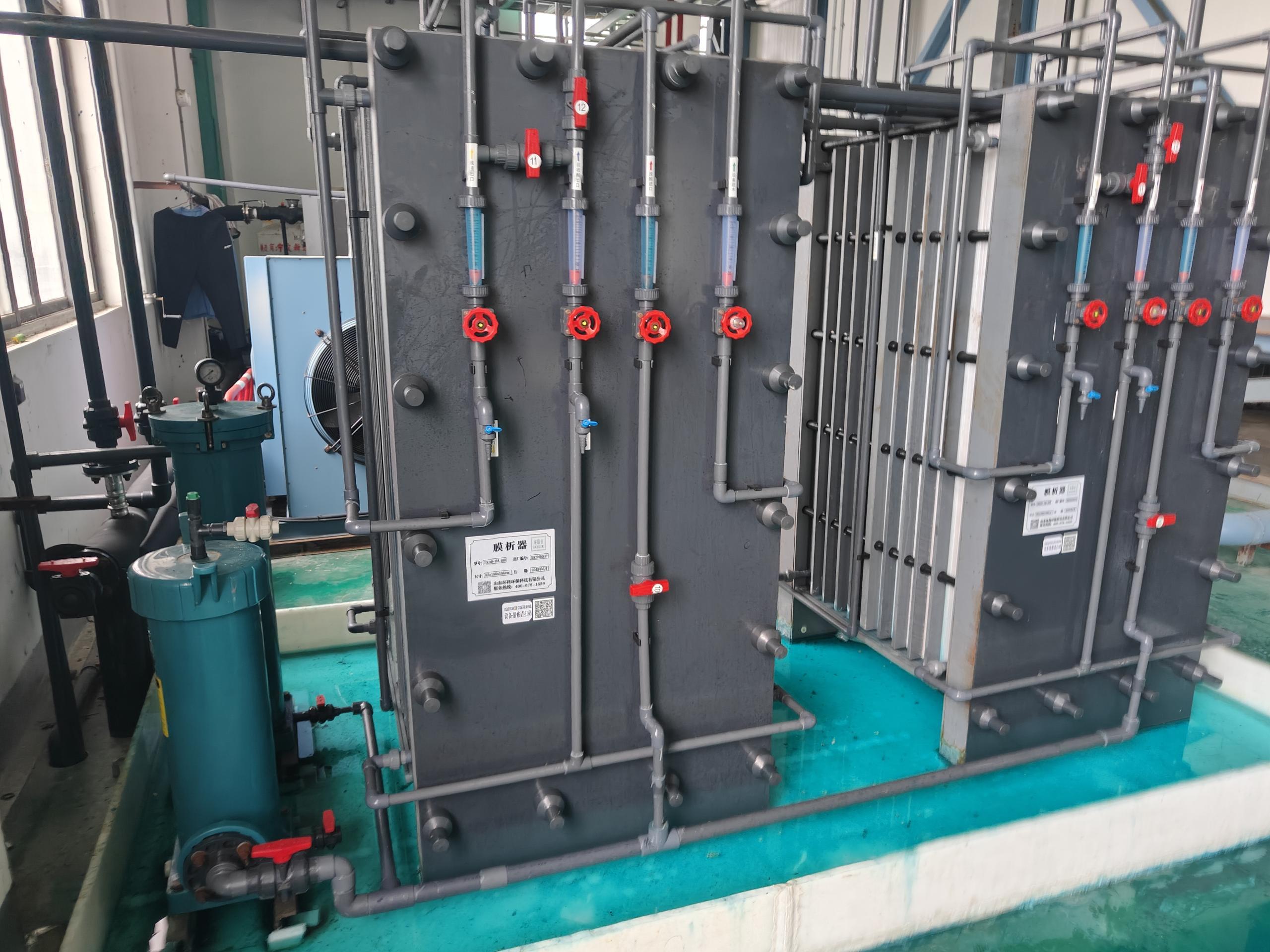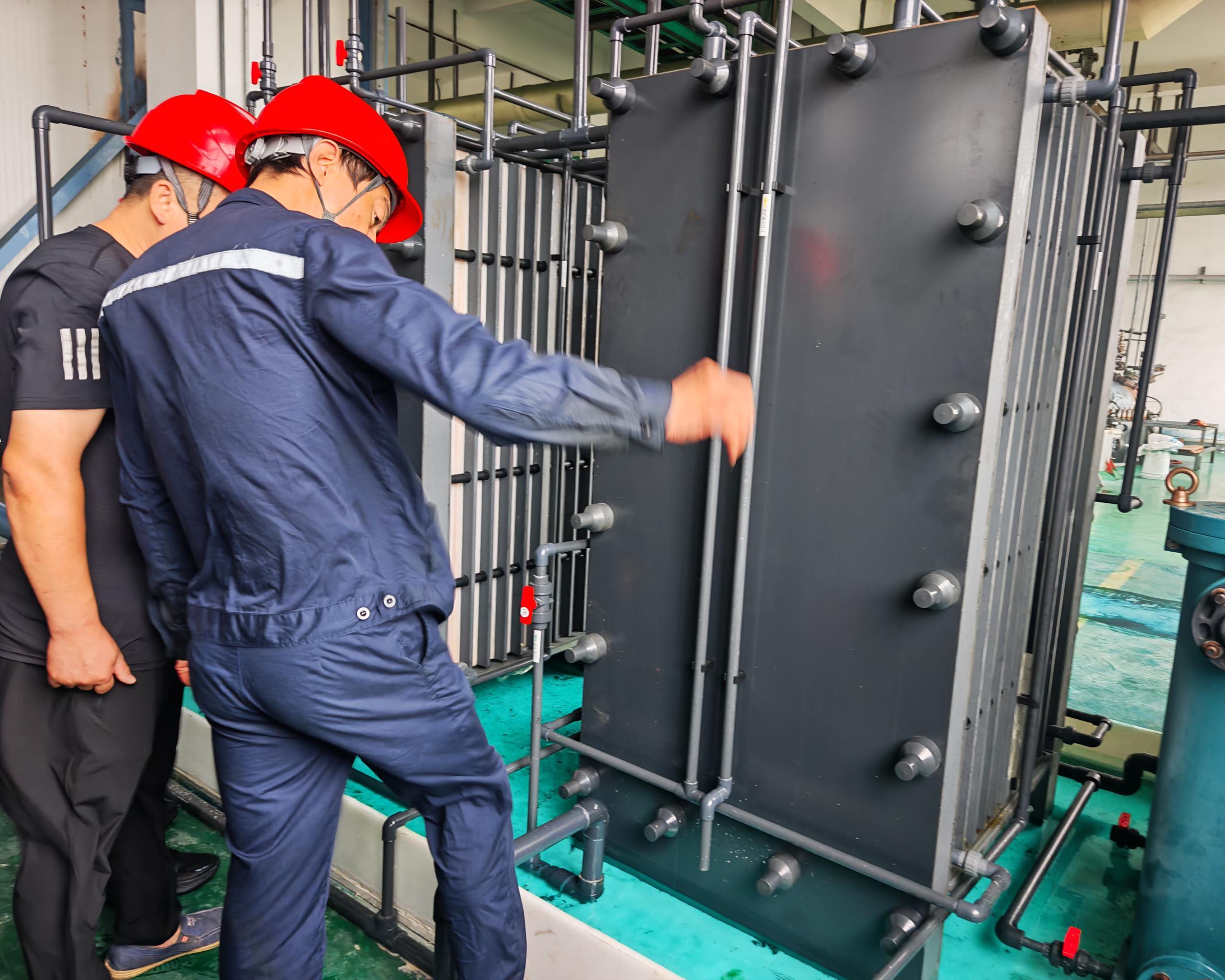13
2025
-
11
Exploration of the Application of Membrane Chromatography Technology in the Recovery of Waste Alkali from Tungsten Metallurgy
Author:
Tungsten metallurgy, as a core industry for global strategic resource processing, requires a large amount of alkaline solutions such as NaOH in the production process for tungsten ore leaching, tungstate salt precipitation and other procedures. In traditional processes, the mixed waste alkali solution of NaOH/Na₂WO₄ is directly discharged, which not only leads to the waste of alkali resources but also causes environmental problems such as pH imbalance in water bodies and heavy metal pollution. Membrane chromatography technology, relying on a membrane separation mechanism driven by concentration differences, does not require an external electric field, has low energy consumption and no secondary pollution. It can achieve efficient recovery and resource recycling of alkali in waste alkali liquid, and has become a key supporting technology for the green transformation of the industry.
Technical principles and core mechanisms
Membrane chromatography utilizes the selective permeability of ion-exchange membranes to achieve the directional migration of solutes. The core mechanism is as follows:
Membrane material characteristics - The surface of cation exchange membranes (anion membranes) carries negatively charged groups, allowing cations such as Na⁺ and H⁺ to pass through. The 0.1-0.5nm pores form a "molecular sieve" effect, retaining divalent and above tungstate ions such as WO₄²⁻ and organic substances. Anion exchange membranes (anion membranes) are suitable for acidic systems, while in the alkaline working conditions of tungsten metallurgy, anion membranes are mainly used. The concentration difference drive and multi-stage series design: the raw liquid chamber (waste alkali solution) and the recovery chamber (pure water) are separated by membrane modules. Under the push of a 5%-25% concentration difference, Na⁺ diffuses to the low-concentration side, while OH⁻ migrates in the opposite direction and combines with H⁺ to form water, achieving the separation of alkali and tungsten. For complex systems, a three-stage series membrane stack is adopted: the first stage recovers NaOH (with a recovery rate of over 80%), the second stage concentrates it to 3mol/L for direct reuse, and the third stage retains WO₄²⁻ (retention rate ≥95%), reducing the residual liquid WO₃ content to below 0.1g/L.


Core application scenarios
1. Recovery of tungsten ore alkali leaching solution: The waste liquid from tungsten ore alkali leaching contains 10%-15% NaOH and 5%-8% Na₂WO₄. Traditional neutralization methods consume acid and produce high-salt wastewater. Membrane chromatography technology recovers 12% concentration NaOH (recovery rate 85%), and retains WO₄²⁻ to reduce the residual liquid WO₃ content to 2g/L (retention rate 90%). A certain enterprise processes 10,000 cubic meters of waste alkali liquid annually, which can recover 1,200 tons of NaOH, save 2.4 million yuan in costs annually, and reduce the generation of tungsten sludge by 50%.
2. Sodium tungstate solution refining: The waste liquid from sodium tungstate production contains 18% NaOH and impurities such as SiO₃²⁻ and PO₄³⁻. The "membrane precipitation + chemical precipitation" process is adopted: five-stage membrane stack series recovery of NaOH (recovery rate 82%, purity ≥95%), and the residual liquid SiO₃²⁻ is retained by nanofiltration membrane (≥98%), reducing silicon sludge by 30% annually. After application by a certain enterprise, the production cost of sodium tungstate was reduced by 30%, and the utilization rate of alkali resources was increased to 95%.
3. Treatment of chemical tungsten waste liquid: The chemical tungsten waste liquid contains complex tungsten, phosphate and organic matter. After the Fenton reagent breaks the complex to release free WO₄²⁻, 12% concentration NaOH is recovered through the cation membrane (recovery rate 75%), and the residual WO₄²⁻ is adsorbed by the ion exchange resin (retention rate 99%), reducing the annual production of tungsten sludge by 60%.
Technological breakthroughs and process optimization
1. Membrane material innovation - Developing surface-grafted polyethylene glycol modified cation membranes to solve the WO₄²⁻ deposition problem and extend the membrane life to 3-5 years. By using polyphenylene ether-based cation membranes through a special cross-linking process, the selectivity is increased to 99.5%, the anti-pollution performance is enhanced by 30%, and the annual depreciation cost is reduced to 100,000 yuan per set.
2. Process and Intelligent Upgrade - We have launched small mobile systems with a capacity of 10-20m³/d and large fixed modular systems with a capacity of 100-500m³/d, reducing the cost of water treatment per ton to 8-10 yuan (15-20 yuan in traditional methods). By integrating membrane chromatography, electrodeposition and crystallization technologies, a "recycling - purification - reuse" chain is constructed, with the concentration of recovered alkali reaching over 4mol/L and the content of tungsten impurities reduced to below 0.05g/L. By integrating the Internet of Things (iot) with AI algorithms, parameters are monitored in real time and adjusted automatically. Membrane fouling is predicted through machine learning, reducing downtime by 50% and enhancing operational stability to 95%.
Strategic value and industry impact
The application of membrane analysis technology not only helps enterprises comply with environmental protection regulations but also creates significant economic value: for every ton of waste alkali treated, 0.9 tons of NaOH and 0.03 tons of WO₃ can be recovered, saving enterprises over 1.5 million yuan in costs annually. Compared with traditional evaporation methods, the carbon emissions per ton of water treatment are reduced by 60%, supporting the goal of carbon neutrality. Promoting the transformation of the industry from "end-of-pipe treatment" to "resource recycling", enhancing global competitiveness, and becoming the core engine for the high-quality development of China's tungsten metallurgy industry.
Related Products
Exploration of the Application of Membrane Chromatography Technology in the Recovery of Waste Alkali from Tungsten Metallurgy
2025-11-13
Membrane evolution technology: Green Innovation and Practical Breakthrough in Copper Smelting Processes
2025-11-12
From "Salt Disturbance" to "Salt Treasure" : Electrodialysis makes glycine production both environmentally friendly and cost-effective
2025-11-11
Electrodialysis technology: The green Solution to desalinating Soy sauce
2025-11-10
Huanke Environmental Protection Technology
HOTLINE:
Address:Optoelectronic Industry Accelerator in Weifang Hi-Tech Zone, Shandong Province, China
Contact:Zhang Gong
WhatsApp:+8619953608211
Email:eco.eqpt@gmail.com


Consult

TikTok
Copyright © 2023 Shandong Huanke Environmental Protection Technology Co., Ltd
